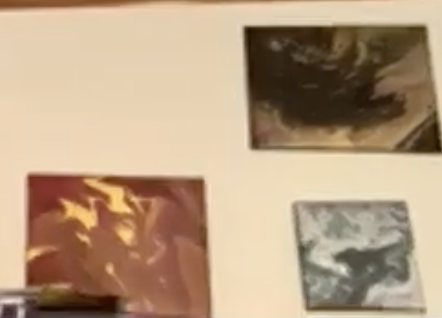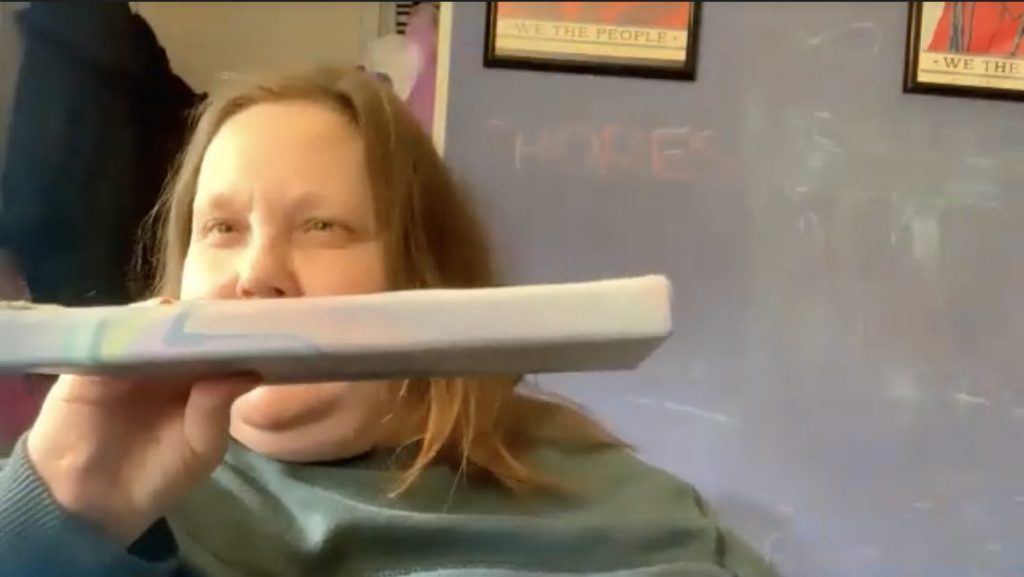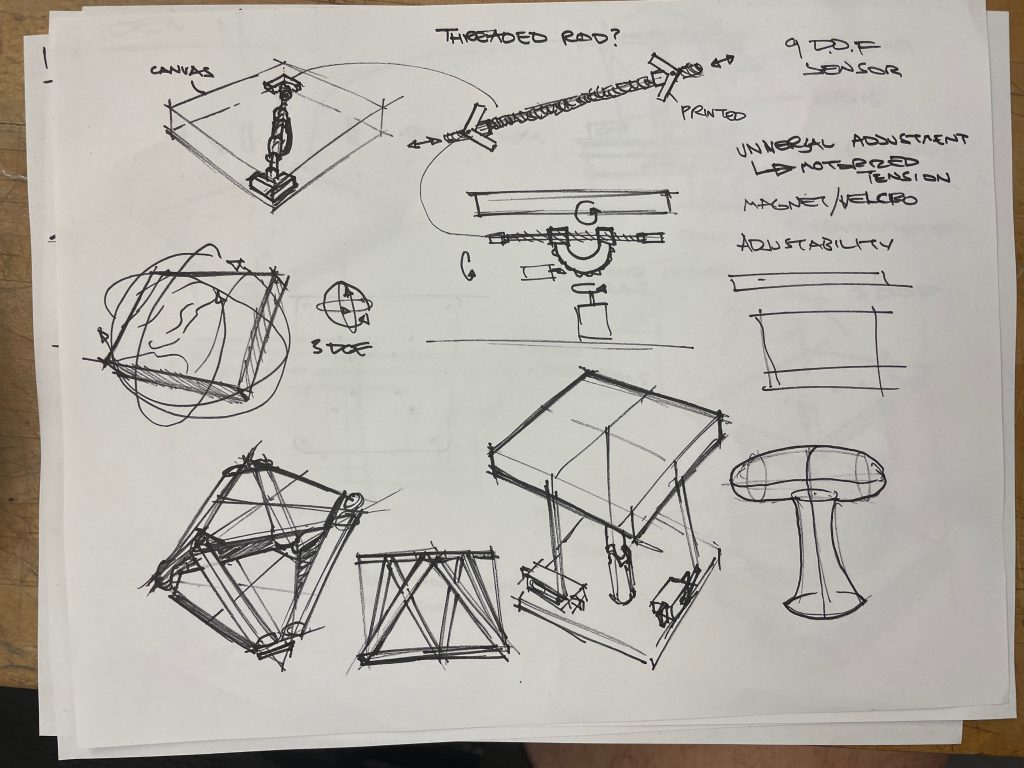Overview
In this meeting, Dani, Erica, and Tate interviewed Brenda to get a better understanding of Brenda’s needs in order to build a useful device for her. Brenda has cerebral palsy and has complete use of her right hand but can only use her pincer for her left hand since the other three fingers are linked. This limits Brenda’s ability to use both hands and do some activities that we take for granted such as putting her daughter’s hair in a ponytail or tying her shoes. With the resources and knowledge gained from this Physical Computing course, Dani, Erica, and Tate hope to build a functioning device that will aid Brenda in performing a specific task.
Agenda
4/6/2021, 7pm, zoom
- 5 minutes: introductions
- 15 minutes: ask questions about the idea Brenda had suggested to us (acrylic pour painting)
- 15 minutes: ask broader questions about other areas where a device could be useful
- 10 minutes: lingering questions or anything else that comes up along the way
Meeting Prep
- Prior to the meeting, we had already reached out to Brenda via email asking about potential project ideas.
- Brenda had given us two project ideas:
- 1. a privacy microphone compatible with the iPad Pro that would allow Brenda to use voice recognition to type without picking up background noise
- 2. a tilting lazy Susan that could controlled by a joystick that would allow Brenda to tilt her acrylic pour paintings without assistance from another human
- Our team unanimously agreed that the second idea was more interesting and feasible, thus during our meeting we mostly discussed the specifics of an acrylic pour device.
- Below is the full email Brenda sent:
- My first idea is a solution to an existing technology problem I have. Are use voice recognition for most of my typing. I’ve switched to an iPad Pro for about 98% of my work computing. The voice recognition is extremely accurate and faster for me then Dragon naturally speaking 15, Not to mention more intuitive and cheaper. I have two problems. The first is that the microphone picks up much more background noise then I headset mic that I used with a Windows based desktop. When that is combined with the fact that my office is now going to be in an open floor plan, I have a real problem on my hands. I need to be able to dictate privately. Privacy microphones exist and I have tried one. The problem is that it is incompatible with the iPad Pro. The audio interfaces don’t talk to one another. I have the components that I have tried if you would like to work on a solution to get them to play nicely with one another.
-
The second is a lot more fun… Well I think so at least. One of my hobbies is acrylic pour painting. I’m sure that at least one of you is familiar with the medium. My problem is that since I only have one functioning hand I have a difficult time picking up the canvas to tilt it to get the paint to flow. I have this idea for a Lazy Susan that would also tilt. I would like to be able to control it through a joystick kind of mechanism. I think variable speed controls would be fun as well. I have parts for the Lazy Susan itself, But nothing for I comptroller of any kind that you could play with.
Summary
- First, we found out how Brenda currently does her acrylic pouring projects. She is able to pour the paint by herself, however, she has someone else assist her in the tilting process since it requires both hands. However, with this device Brenda hopes to be able to complete the tilting step all by herself.
- Throughout the meeting, we discussed the specific functionalities and movement of the device. We had the umbrella idea that this would make acrylic pouring easier for Brenda, but we needed to specify exactly which steps the device should help with and how. At first, we had imagined that Brenda would have wanted the device to help with as many steps of the acrylic pouring process as possible, however we clarified that Brenda actually liked the process of pouring all the different paint colors into cups and having control over how the paint was poured onto the canvas as well. Thus, we only need to build a device that allows Brenda to tilt the canvas with one hand so the paint can slide around and pour over the sides of the canvas.

Brenda’s acrylic pour projects
- We also discussed how Brenda would be able to control the tilting of the board. We currently have a joystick module included in our kits, but we wondered whether Brenda would prefer different grips or mechanisms. She explained that she had some t-bar joystick grips that she likes using and other 3d printed ones as well.



Brenda’s preferred t-bar joystick attatchment
- Although we can just start with the provided joystick for our project, we can also 3d print a joystick to make the grip easier for Brenda to hold if we are able to.
- Furthermore, we realized that the canvas had to be mounted to the canvas without covering the sides since it was important for Brenda to be able to get paint on all the canvas sides. Brenda informed us that latches were not very accessible since they usually required two hands to use so other methods of attachment would be more useful. Also, Brenda likes to work on different canvas sizes ranging from 4″x4″ to 12″x12″, thus something that was flexible would be preferred.

Side view of Brenda’s preferred canvas

Back view of Brenda’s preferred canvas
-
- Thus, we had to find an attachment that hugged the inside of the canvas so that the sides were not covered. During the meeting, Tate drew some sketches of the potential solutions we discussed.

Some of Tate’s sketches
Reflection
- Overall, the meeting went as planned and we clarified many of Brenda’s preferences that we need to take into consideration to make the project easy to use for her. It was pretty easy to get the conversation started since Brenda is quite talkative and we had many ideas after reading her initial description. We also learned that in general, any actions that require two hands are almost completely impossible for her to do, and any device that could help her complete even simple two-hand tasks would be great for her. Ultimately, we decided to stick with her idea of the acrylic pour painting device because it is something that she is excited about and is within the scope of our abilities. For next time, we would want to start with more introductions to get to know each other as people first before diving in to the project.